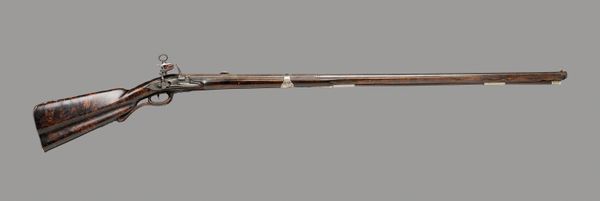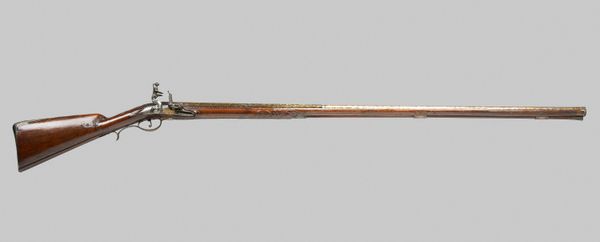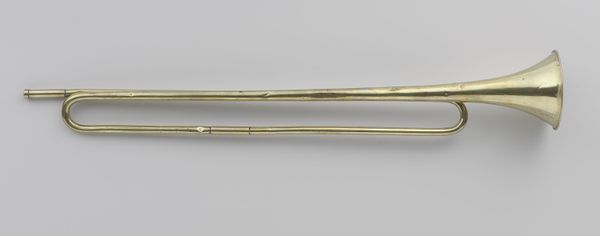
metal, sculpture, wood
#
baroque
#
metal
#
sculpture
#
sculpture
#
wood
#
history-painting
Dimensions: length 243.8 cm, height 23 cm, depth 7.5 cm, weight 6.6 kg, length 203.5 cm, diameter 16.8 mm
Copyright: Rijks Museum: Open Domain
Curator: So, here we have a "Lang vuursteenjachtgeweer," or Long Flintlock Hunting Rifle, crafted somewhere between 1735 and 1740 by Jan van (II) Solingen. What springs to mind when you see this? Editor: It strikes me as cold. Stark. Laying there, devoid of context, it's hard to ignore its potential for violence. A tool dressed in baroque finery. Curator: Dressed is right! The detail on the lock mechanism is really exquisite, isn't it? All that swirling metalwork juxtaposed with the smooth, polished wood of the stock. It’s quite elegant, really. Editor: Elegant maybe for some. For others, a constant reminder of the hunt—of dominance and maybe oppression? Who exactly was doing the hunting and who were they hunting, one wonders. Curator: Well, these long rifles were status symbols, you know? Hunting was a leisure activity reserved for the wealthy elite back then. Think about the societal structures literally embedded in this object. Editor: And the violence inherent in those structures. It wasn't just about leisure, it was about maintaining power, controlling territory. And whose territory was it originally, before colonization and appropriation? I keep coming back to that. Curator: That’s a valid point. It does force us to consider the narratives of privilege, certainly. Looking at it now in the Rijksmuseum, disentangled from the actual act of hunting… it’s almost frozen in time, you could say. A relic. Editor: Exactly. Frozen in time, but still loaded with implications. By showcasing such objects without deeper contextualization, do we risk glorifying a past that needs rigorous interrogation, particularly in terms of power and inequity? Curator: I see your point. Perhaps appreciating the artistry while being fully aware of the historical realities is key. It’s a complex tension. Editor: Absolutely. For me, engaging with art is not just about aesthetics, it’s about acknowledging those complexities. Questioning the narratives, decentering the dominant perspectives, that's where we find resonance. Curator: Nicely put! I think it’s important to remember, no object exists in a vacuum. It’s a window into the past, with all its beauty, darkness, and messy humanity. Editor: And that looking through the window needs to involve understanding who built the house, and who was kept outside.
Comments
No comments
Be the first to comment and join the conversation on the ultimate creative platform.













